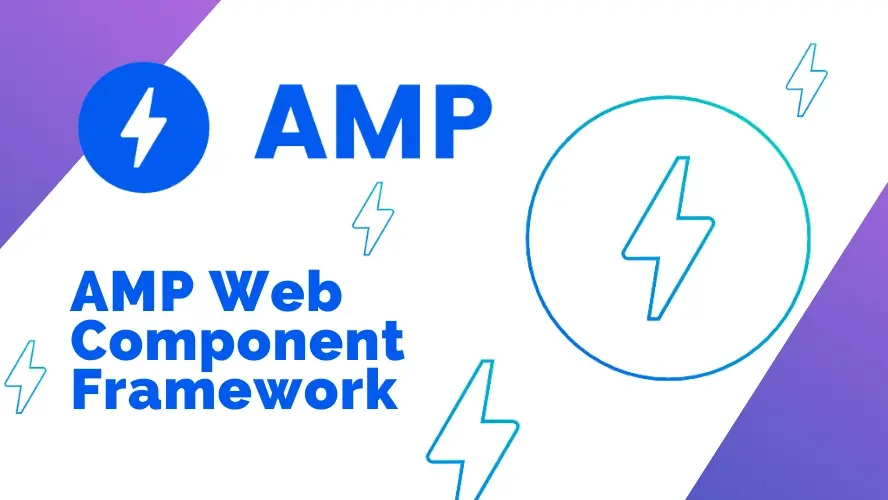Google first introduced AMP (Accelerated Mobile Pages) on October 7, 2015. It was developed as a solution to the rising issue of slowly loading mobile web pages. By offering a set of guidelines and tools for developing web pages that would load significantly faster, especially on mobile devices, AMP was created to address this issue.
Although AMP was initially treated with considerable skepticism, publishers and developers swiftly adopted it. This article will let you know more about the AMP Web Component Framework and why it is so important to use it to create fast, user-first web experiences. Additionally, there will be some tips to generate AMP web pages for your websites.
What is AMP Web Component Framework
AMP (Accelerated Mobile Pages) is an open-source web component framework that makes it easy to create fast, user-first websites, stories, emails, and ads. AMP is supported by all major browsers and platforms, including Google Search, Twitter, and Facebook.
The AMP Web Component Framework is a collection of custom HTML elements and CSS styles that can be used to build AMP sites. The subset of HTML, CSS, and JavaScript used in AMP pages are performance-optimized utilizing methods including lazy loading, prefetching, and caching. They are also easy to access and cross-browser compatible.
Here are some examples of AMP Web Components:
- <amp-img>: A component for displaying images on AMP pages.
- <amp-video>: A component for displaying videos on AMP pages.
- <amp-carousel>: A component for displaying a carousel of images or videos.
- <amp-form>: A component for creating and submitting forms on AMP pages.
- <amp-list>: A component for displaying lists of data on AMP pages.
- <amp-accordion>: A component for displaying collapsible content on AMP pages.
The Benefits of Using AMP
Here are some of the benefits of using AMP:
- Faster performance: AMP pages load significantly faster than regular HTML pages, especially on mobile devices.
- Improved user experience: AMP pages are designed to provide a better user experience, with features such as instant loading, smooth animations, and efficient battery usage.
- Higher visibility in search results: Google Search prioritizes AMP pages in its search results, giving them a higher chance of being seen by users.
- Greater reach: AMP pages can be shared and distributed across a variety of platforms, including Google Search, Twitter, Facebook, and LinkedIn.
Why do AMP Pages Load Faster?
AMP pages load significantly faster than regular HTML pages, especially on mobile devices. This is because AMP pages use a number of optimizations to improve performance, such as:
- Lazy loading
AMP pages only load images and other resources when they are needed, which reduces page load times.
- Prefetching
AMP pages prefetch resources that are likely to be needed, which further reduces page load times.
- Caching
AMP pages are cached by Google and other content delivery networks (CDNs), which makes them load even faster.
How to Build Websites Using AMP?
There are several methods to build websites or create web pages using AMP. However, before diving deeper, you will need to follow these steps:
1. Design your AMP page
Before you start coding, it is important to design your AMP page and decide what components you will need. You can use the AMP documentation to learn more about the available components and how to use them.
2. Create your AMP page
Once you have designed your AMP page, you can start coding it. You can use the AMP starter code to get started.
3. Add AMP components
Once you have created the basic structure of your AMP page, you can start adding AMP components. You can use the AMP documentation to learn more about the available components and how to use them.
4. Validate your AMP page
Once you have added AMP components to your page, you need to validate it to make sure that it meets the AMP requirements. You can use the AMP validator to validate your page.
5. Deploy your AMP page
Once your AMP page is validated, you can deploy it to your website. You can use the AMP documentation to learn more about how to deploy your AMP page.
Creating Web Pages Using AMP Web Component Framework
Applying the AMP web components framework is the best choice whenever you have plenty of web pages to handle. Here are some advantages of using an AMP web component framework:
Time saver: It can save you time and effort by automating the process of creating AMP pages.
Ready-made component framework: can help you to create high-quality AMP pages that meet the AMP requirements.
Ease of use: can make creating and deploying AMP pages easier, even if you are not a web developer or have limited coding knowledge
Methods of Using AMP Web Component Framework
AMP Web Component Framework can be useful for building websites either landing pages or CMS-based websites, and web design elements such as stories, ads, and emails. In order to do so, there are some different methods that you can choose to build web components in the AMP framework environment.
AMP Generator or AMP Converter
An AMP generator helps you create AMP pages. AMP generators can create new AMP pages from scratch as well as convert existing HTML pages to AMP. There are a number of different AMP generators available, both online and offline.
To use an AMP generator, simply follow the instructions provided by the generator. Most AMP generators will require you to provide the URL of the HTML page that you want to generate as an AMP web page or upload the HTML file. Once you have provided the HTML page or file, the generator will generate the AMP page.
Examples of AMP generators or convertors are as follows:
Google Web Designer
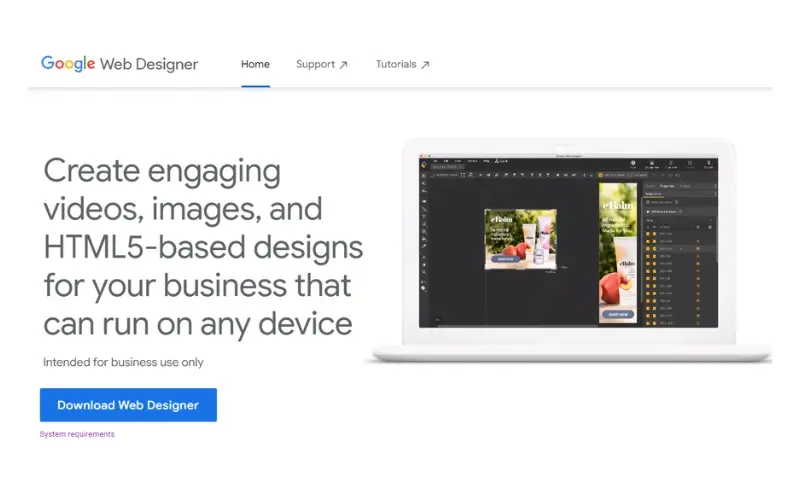
The AMP features in Google Web Designer are able to generate AMP HTML ad and page creation, components, preview, and validation with a user-friendly interface.
Amp Cloud
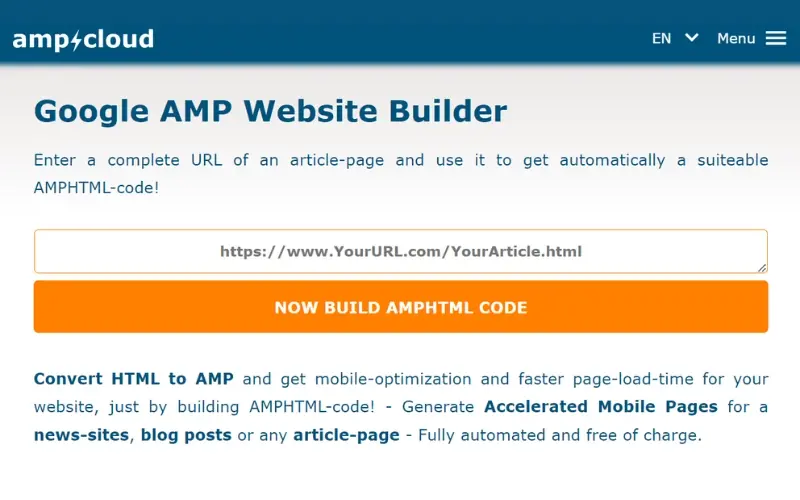
It’s a simple free online tool that can convert your existing HTML page to AMP HTML code just by inserting your web page URL. A fairly time saver if you just need to convert several pages from your current website.
AMP Tool
This type of AMP framework allows you to create different web components using tools. The AMP tool should be user-friendly and enhanced with features to create the web components that you need. Here are some web components that you can build:
1. Design Elements
It includes features to create web stories or ads that are compatible with the AMP framework and often use the WYSIWYG editor in the interface.
Example of AMP Tool to create design elements

This tool offers a free plan that includes all of the core features essential for a fully functional Web Stories blog which is only for self-hosting (subfolder) blogs. No fees. No credit card is required when you register. You can also create a free blog.
2. Email
It offers AMP email templates or can work as an email editor or email builder with the AMP framework. Very useful when you need to create a quick email newsletter for your subscribers or clients.
Example of AMP Tool to create email:
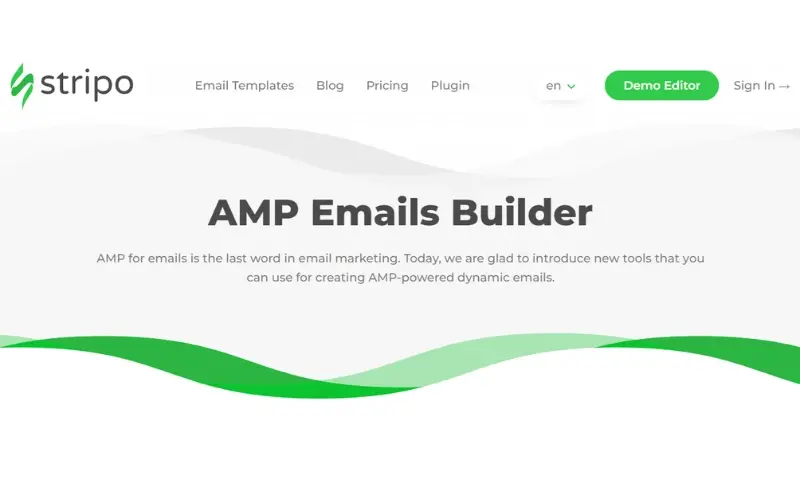
Gives you a great number of options to create interactive email templates quickly with Drag-n-Drop & HTML editor. You can try the free library of ready-to-use modules and templates to get started
3. CMS and Platform
It allows you to create web components in CMS and a platform that supports AMP. As most of the CMS web components are dynamic, the CMS plugin, extension, or module can generate AMP pages for blog posts faster for instance.
Example of AMP Tool to create web components in WordPress CMS:
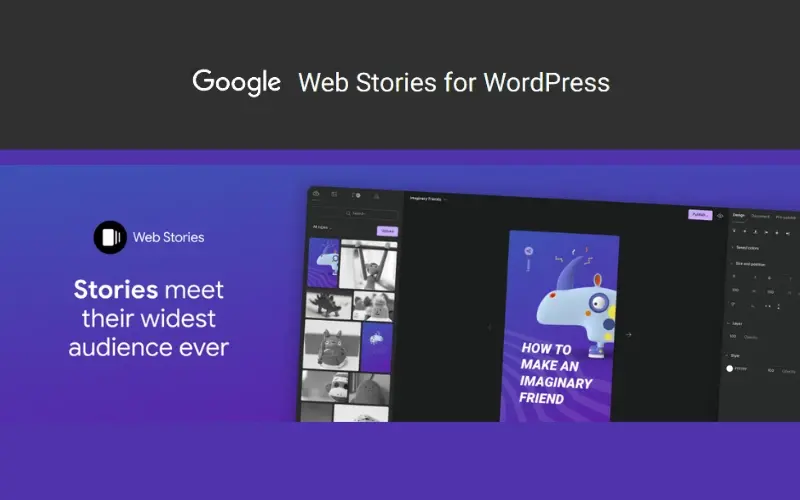
This WordPress CMS plugin makes it possible for you can easily create visual narratives with captivating animations and tappable interactions using Web Stories, a free, open-web, visual storytelling format for the web developed by Google.
Additional Notes
AMP has a number of advantages to improve the performance and user experience of websites, nevertheless here are some additional things to keep in mind:
AMP pages may not be suitable for all types of websites. For example, websites with complex layouts or functionality may not be able to be converted to AMP.
Not all users can get the benefit from these AMP pages. For example, users with slow internet connections may not benefit from using AMP pages.
The AMP page technology is still in ongoing development, and things may change in the future. For example, Google may add new features to AMP, or they may change the way that AMP pages are indexed and ranked.
Conclusion
When choosing an AMP framework, it is important to consider the ease of use, features to generate AMP pages for different types of content (e.g., blog posts, product pages, landing pages), and support for AMP analytics. The AMP framework tools and resources should not negatively impact your website's performance and should be compatible with your existing website and plugins.
Overall, AMP is a powerful tool for improving the performance and user experience of websites. However, it is important to weigh the pros and cons carefully before deciding whether or not to use AMP.
Frequently Asked Questions
How does Verpex ensure optimal loading speed for my social media platform?
Verpex ensures optimal loading speed for your social media platform by utilizing SSD storage, LiteSpeed Webserver, and a global network of 12 servers to deliver content efficiently and quickly to users worldwide.
Is there any impact on the loading speed of my website due to domain redirection?
Domain redirection does not directly affect website loading speed. However, the destination server's performance or the redirect configuration's efficiency can indirectly affect the loading speed. It's important to choose a reliable hosting provider, optimize your website's performance, and ensure efficient redirect configurations to minimize any potential impact on loading speed.
Can a website have more than one domain?
Yes, a website can have multiple domains through domain aliasing or forwarding, allowing it to be accessed using different domain names while representing the same website. This is beneficial for businesses aiming to strengthen branding, target specific regions or audiences, and utilize subdomains for organizing different sections or functionalities.

Audee Mirza is a graphic designer and WordPress developer at audeemirza.com who resides in Surabaya, Indonesia. She's also the author of Graphic Identity Blog, a professional logo designer, and often creates vector illustrations for clients and marketplaces. She enjoys good typography design and all kinds of animation.
View all posts by Audee Mirza















